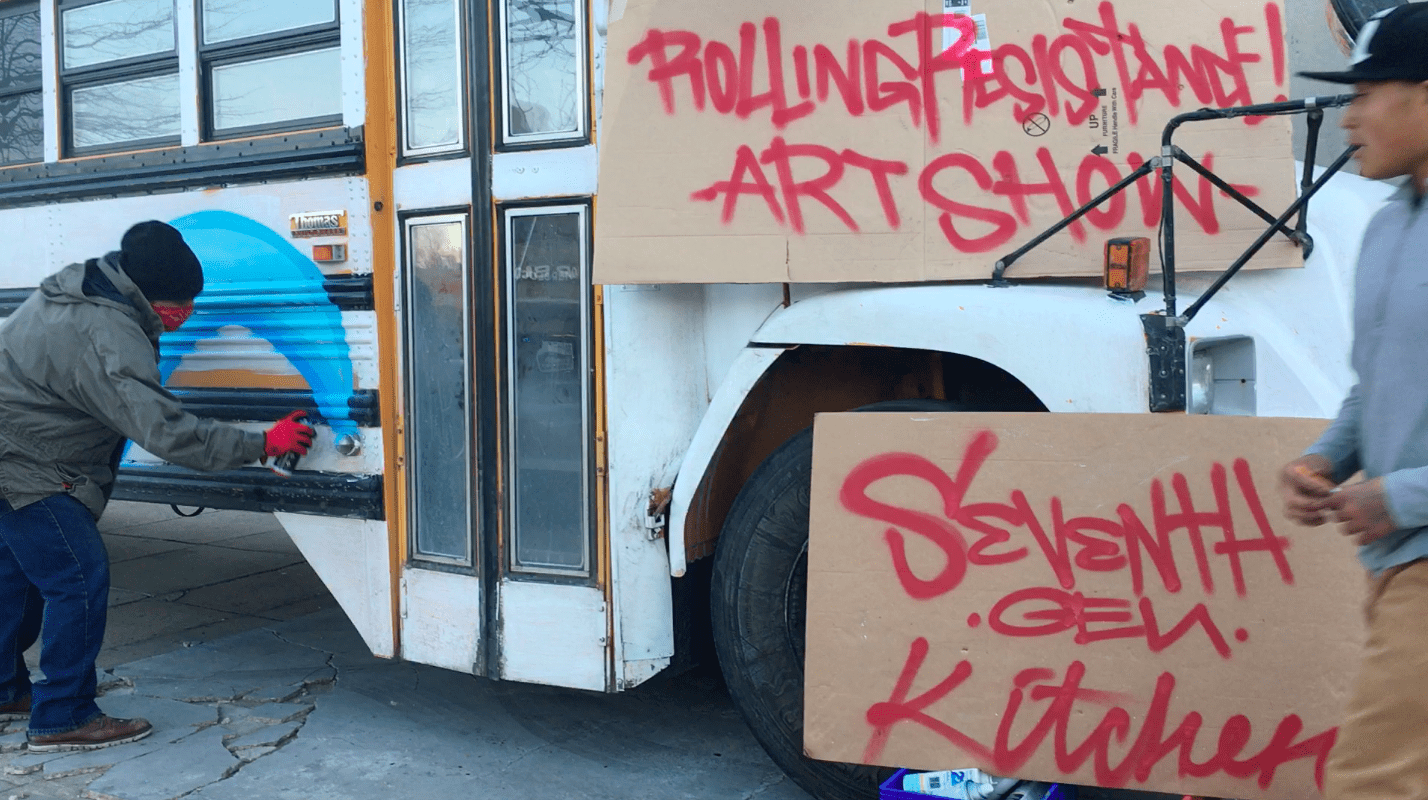
The Resistance is older than the United States.
It is older than hashtags, livestreams, and Facebook invitations. The Resistance began the moment colonizers stepped off their boats and claimed North American territory as their own.
It continues to this day. In early March, a group of Native American activists called the Rolling Resistance traveled to Washington, DC to protest the continued desecration of Native American land and to fight for indigenous peoples’ rights.
The group travels — and largely lives — out of a repurposed school bus. There are about 15 activists living out of the bus at a time; they travel across the country to raise awareness of and stand up for indigenous rights; their ages range from teenagers to middle-aged adults; and they have dedicated their lives at this moment to fight for their rights and the dignity of their people.
The founding members of the group came together last year at Oceti Sakowin, the camp of the Seven Council Fires of the Sioux nations, in Standing Rock, N.D. Thousands of tribal members and allies had gathered to protect their sole water source from Transcanada’s $3.8 billion Dakota Access Pipeline (DAPL).
Police in full riot gear, attack dogs and freezing water cannons met the protesters. An outpouring of activism from the resistance camps at Standing Rock — and activists across the country — did not stop indigenous rights from being traded in for company profit.
The police raided the last camp, Oceti Oyate, in February 2017; the Rolling Resistance formed during this violent eviction.
“The day of the raid was confusing,” said Brandy, one of the founding members. “Maybe I was in shock, because there were a lot of explosions. There were a lot of weird muffled sounds in camp. The snow was really thick. It was quite smokey and gray. And just with the army tanks there… it didn’t feel real.”
As members describe it, the Rolling Resistance formed when they were “blessed” with a school bus after the raid. To the indigenous warriors, the bus was a lifeline and a space for safe, supportive mourning.
“We were all kind of displaced after the raid. We weren’t sure where we were going, if we were going home,” said Brandy. So about 25 activists gathered on the bus, and they kept fighting for their rights.
The school bus traveled to Washington, D.C. earlier this month from the Line 3 pipeline in Minnesota. The pipeline is owned by Enbridge Inc., and stretches over one thousand miles from Alberta, Canada to Lake Superior. The Rolling Resistance members say Line 3 pipeline is invasive, it is massive, and it is decaying. And it is the Rolling Resistance’s latest fight.
The Rolling Resistance held two public events in the Capital: A film screening of Black Snake Killaz – A #NoDAPL Story, a documentary on the resistance at Standing Rock; and an art and music open house at Uptown Art House in Cleveland Park.
At the Uptown Art House, activists played drums, rapped and shared about their experiences in a country that has chosen to exploit indigenous rights.
The Rolling Resistance formed in the aftermath of the DAPL protests, but the group is standing up for something much larger than pipelines.
At one of the events, an indigenous artist named Traz painted the school bus in bright, rolling blue waves and a large bear print.
The painting “represents our movement,” said Traz. “We’re water protectors, so we’re going to have a water theme to it. [The art] is part of the medicine of what we are doing. And we’re honoring black bear.”
The federal government and wealthy business interests have exploited Native American people, land, and natural resources for centuries. The modern act of tearing out the land to construct thousands upon thousands of miles of pipeline is the latest act against a people and a culture that predates most of us.
We should not allow this exploitation to continue by allowing natural gas companies to destroy their land even further.
“Keep your eyes open,” said Hennessy, another travelling member of the Rolling Resistance. “We’re just out here standing up for our people and for our rights.”
This article is the first in a two-part article series about Indigenous Rights. Read more from the Center for Community Change by visiting Change Wire.
Learn more about the Rolling Resistance here.
